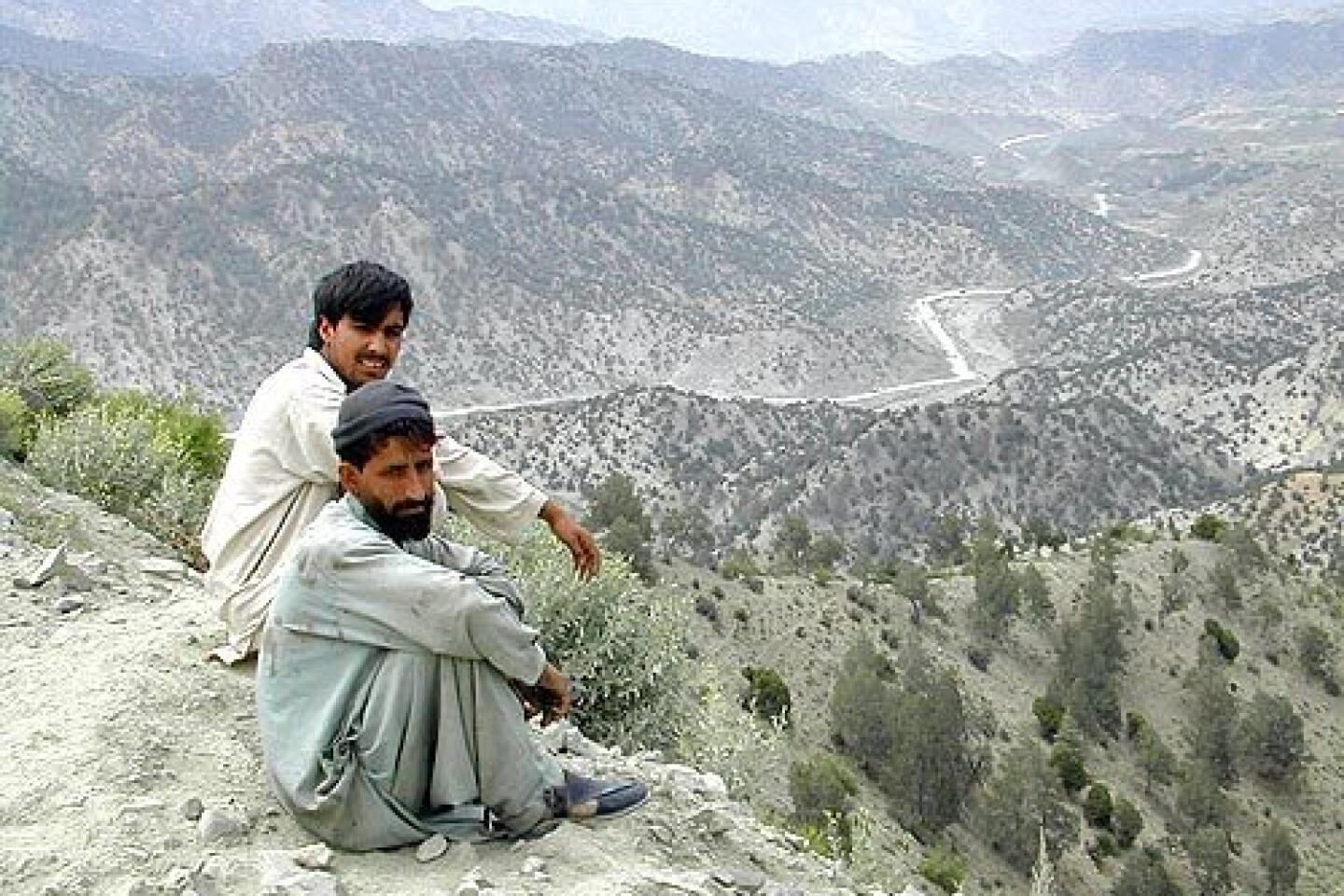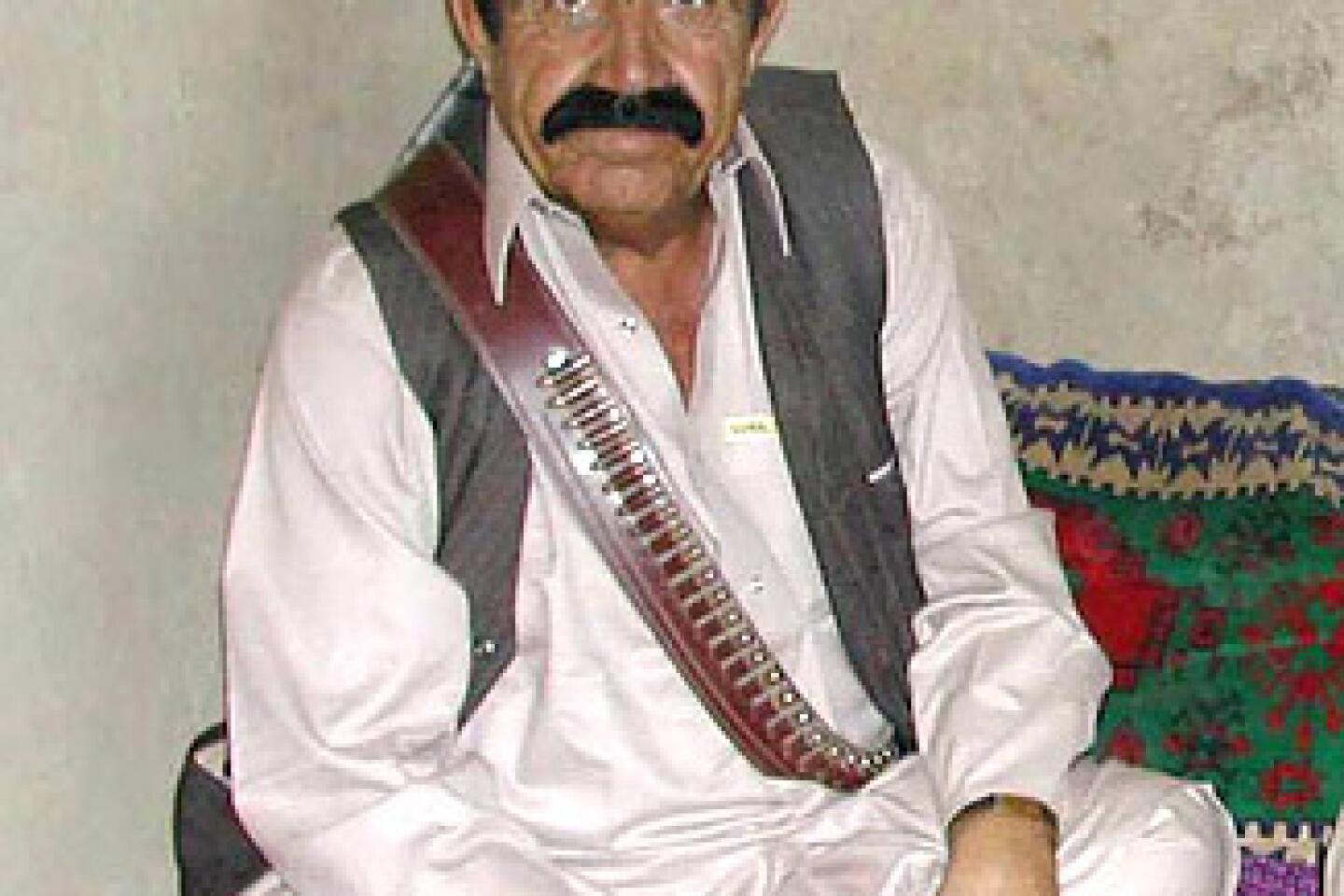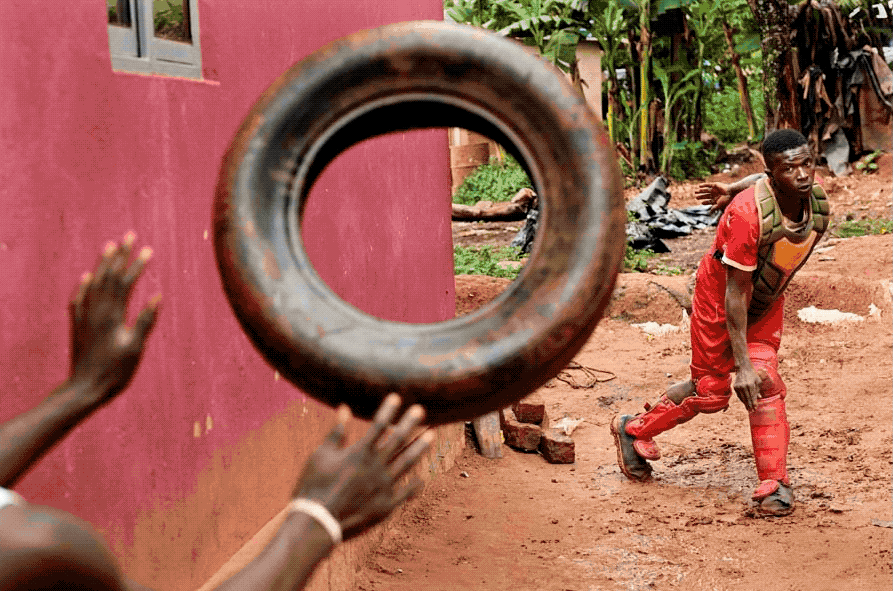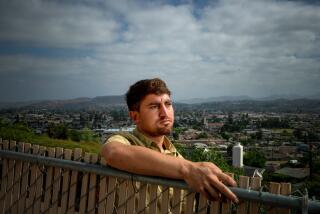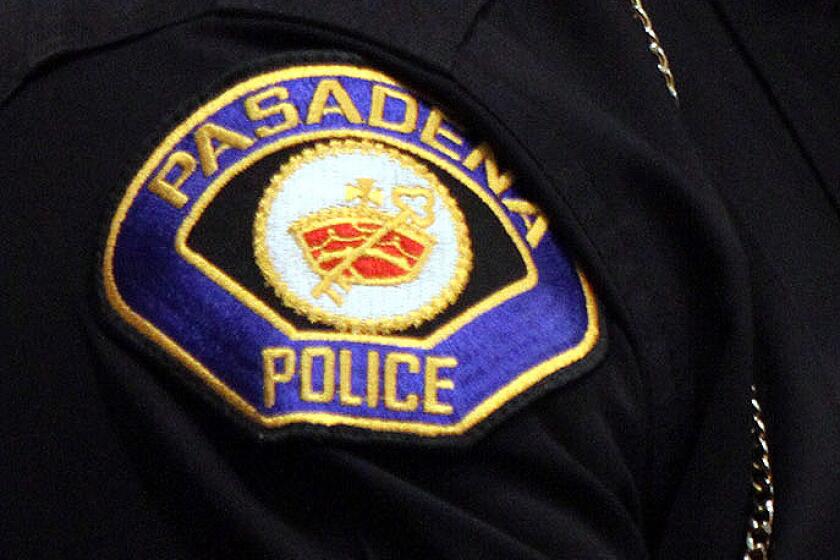A Silence in the Afghan Mountains
GARDEZ, Afghanistan — After completing their deployment to this remote firebase, the Green Berets of ODA 2021 left for home covered in glory.
The 10-member Special Forces team, part of the Alabama National Guard, returned to their families in the spring of 2003 with tales to tell of frenzied firefights and narrow escapes.
Its commander had nominated each of his men — as well as himself — for medals for valor. The team’s performance was heralded as evidence that the Guard could play as equals with the regular Army in the war on terrorism.
But the team also had come home with secrets.
Apparently unknown to Army officials, two detainees had died in the team’s custody in separate incidents during the unit’s final month in eastern Afghanistan. Several other detainees allege that they were badly beaten or tortured while held at the base in Gardez.
One victim, an unarmed peasant, was shot to death while being held for questioning after a fierce firefight. The other, an 18-year-old Afghan army recruit, died after being interrogated at the firebase. Descriptions of his injuries were consistent with severe beatings and other abuse.
A member of the Special Forces team told The Times his unit held a meeting after the teen’s death to coordinate their stories should an investigation arise.
“Everybody on the team had knowledge of it,” the soldier said, insisting on anonymity. “You just don’t talk about that stuff in the Special Forces community. What happens downrange stays downrange . Nobody wants to get anybody in trouble. Just sit back, and hope it will go away.”
What distinguishes these two fatalities from scores of other questionable deaths in U.S. custody is that they were successfully concealed — not just from the American public but from the military’s chain of command and legal authorities.
The deaths came to light only after an investigation by The Times and a nonprofit educational organization, the Crimes of War Project, led the Army to open criminal inquiries on the incidents. Two years later, the cases remain under investigation and no charges have been filed.
The Times has since reviewed thousands of pages of internal military records showing that prisoner abuse by Special Forces units was more common in Afghanistan than previously acknowledged.
More than a year before the Abu Ghraib prison abuse scandal broke in Iraq, top officers worried that harsh treatment and excessive detentions could lead to criminal prosecutions.
In one November 2002 correspondence, a high-ranking Special Operations official said military police were detecting “an extremely high level of physical abuse” of detainees transferred from Special Forces field bases to a prison in Bagram.
An operations officer with the Combined Joint Special Operations Task Force, the command supervising Special Forces teams in Afghanistan, complained in a memo that prisoners were being held for so long without charges that it “may be implied as kidnapping, a federal crime.”
Early in 2003, the chief Special Forces intelligence officer in Afghanistan warned in a note to the task force commander, Col. James G. “Greg” Champion, and his top aides: “As you are all aware, alleged assaults and kidnapping [have] been occurring for quite some time. Again, I want to emphasize, this is not isolated.”
The same officer reported another improper detention less than two weeks later, notifying Champion’s staff in a memo that reflected his exasperation. “Today is Day 5 of this hostage crisis,” wrote the intelligence officer, Maj. David Davis. He said that such unauthorized detentions amounted to “criminal conduct in my book.”
There also were early warnings from outside sources about prisoner mistreatment.
In a series of meetings that began in late 2002, officials with the International Committee of the Red Cross told top U.S. commanders in Afghanistan that they had fielded a rash of detainee abuse reports involving at least five Special Forces firebases, according to previously undisclosed military documents.
The Red Cross representatives protested that the bases had, in effect, become short-term detention centers, without adequately trained personnel or effective monitoring, said several U.S. officials with knowledge of the meetings.
Most of the bases singled out by the agency were under the control of National Guardsmen with the Alabama-based 20th Special Forces Group. The compound at Gardez, then occupied by ODA 2021, was portrayed as one of the worst. Detainees there alleged they were beaten, kicked, immersed in icy water and deprived of sleep for days at a time.
The Army declined to comment on the cases involving ODA 2021 or more generally on allegations of detainee abuse.
Special Forces firebases in Afghanistan — often the first stop in a detainee’s journey to a holding facility and possibly on to the prison at Guantanamo Bay — operated largely beyond the reach of human rights monitors, journalists and, at times, the military chain of command.
Because of their clandestine nature, Special Forces operations have been a concern to some in Congress and the State Department who worry that human rights violations could be occurring under a cloak of secrecy.
The handling of detainees in Afghanistan became a murky area after President Bush declared early in the war, launched in October 2001, that the Geneva Convention would not be applied to Al Qaeda, and Taliban captives would not be treated as prisoners of war. Instead, detainees were to be treated “humanely,” according to a February 2002 White House directive.
The internal military records show that although senior U.S. commanders in Afghanistan issued warnings and distributed rules consistent with the Army field manual and Geneva Convention, those procedures were routinely ignored.
“You have so much freedom and authority over there,” one member of ODA 2021 said. “It kind of makes you feel like God when you’re out there in cowboy and Indian country.”
The documents also show that in 2003 the leadership of ODA 2021 was repeatedly criticized by its superiors. One 20th Group officer said the Gardez ODA (for Operational Detachment Alpha) was “the most troubled” field team among nearly a dozen in Afghanistan. Another senior officer expressed concern in a note that the team was gaining a reputation as “a rogue unit.”
That a small Special Forces detachment could be tied to two detainee deaths and two apparent cover-ups in less than two weeks reflected an almost perfect confluence of circumstances. They included the personality of the team, the unaccountability of its leadership, the evolution of U.S. policy on detentions, the failure of United Nations officials to report abuses, and the complicity of Afghan officials.
The story of the team’s deployment, like the five-year American campaign in Afghanistan itself, is a tale of high-stakes but often conflicting goals. For the men of ODA 2021, it would be a place and time in which questionable deaths and unquestionable daring were all part of the same mission.
Hotel Gardez
The shooting war was supposedly over when about 300 National Guardsmen of the 20th Group’s 1st Battalion arrived in Afghanistan nine months after the December 2001 ouster of the Taliban regime. Nonetheless, it was a dangerous and chaotic time.Al Qaeda and the Taliban were in flight, but not vanquished. The new government was trying to stand up, but it was still wobbly. And, much like today, the U.S. military struggled to balance the sometimes incompatible missions of combat and reconstruction.
As this latest rotation of U.S. Special Forces hit the ground, much of the countryside remained beyond the control of the newly installed government of interim President Hamid Karzai.
It would fall to Special Forces teams such as ODA 2021 to root out Al Qaeda and Taliban stragglers and unearth caches of weapons. In Paktia, the province that includes Gardez, the task was complicated by byzantine local politics.
Tribal warlords and bandits had skirmished for centuries over the inhospitable terrain along the porous border with Pakistan. They had only been emboldened by the power vacuums and shifting alliances created after the U.S.-led invasion.
As in centuries past, power and wealth in the region flowed to those who controlled the trade routes. In 2002, that meant controlling 17 longtime checkpoints along about 50 miles of dusty mountain road between the provincial capitals of Khowst and Gardez. Both of the detainee deaths linked to ODA 2021 came as a consequence of efforts to pacify that perilous route.
For the Americans, securing the checkpoints would help them detect militants’ movements and ensure the free passage of troops and supplies. For the warlords, who were regularly accused of extorting cash or produce from truck drivers, the checkpoints afforded a means to pay and feed their militias.
The Green Berets were prepared to remove illegally operated checkpoints by force, but Pentagon planners regarded the problem as a local political dispute that should be handled by the Afghans. Besides, the U.S. military was under pressure to move from combat operations to a reconstruction phase aimed at winning hearts and minds.
The stakes could not have been higher for Col. Champion, commander of the 20th Special Forces Group. Not only was the Army counting on his National Guard troops to perform like active-duty professionals, but Champion also had been placed in charge of the Combined Joint Special Operations Task Force.
It was the first time since the Korean War that a National Guard unit held command over all U.S. Special Forces in wartime. If Champion succeeded, a general’s star awaited his lapel.
The 20th, with about 1,600 members, is one of the Army’s seven active Special Forces groups, and one of only two consisting of National Guard troops. ODA 2021 belonged to the 1st Battalion, based in Huntsville, Ala., and its 10 members came from five Southern states.
Some were longtime friends and neighbors, like Sgt. 1st Class Dan L. Smith, a world-class judo competitor who ran a gym outside Nashville, and Sgt. 1st Class Scott Barkalow, a locomotive engineer. Though many of the guardsmen had drilled together for years, most would be seeing their first combat.
The team leader, Capt. Michael M. May, 35, was a decorated Kentucky state trooper who had a cop’s respect for procedure and the chain of command. A father of two, he was cautious and regarded the Special Forces as ambassadors who were helping the Afghans reclaim their country. Though some of his men were eager to round up bad guys, May focused on the team’s broader mission of training Afghan troops.
“I’m going to be the one to write the letter to your kids if you get hurt or killed,” he would tell his teammates.
Some clearly felt May was too passive, especially as conditions in the area deteriorated. They “wanted [us] to grab our guns and drive out the door and go do it,” one team member recalled.
In Gardez, the dusty provincial capital nearly a mile and a half above sea level, the ODA settled into an adobe fort the size of a football field. They called it Hotel Gardez. It was surrounded by 25-foot mud walls and had an elevated latrine accessible only by ladder.
The region was endlessly brown, parched by drought. Being stationed there, one U.S. soldier said, was like “living in a gravel pit.”
The fortress came under regular attack, most often by Taliban loyalists lobbing missiles from a pair of nearby hilltops. One day, a shell exploded in a cemetery behind the fort and the soldiers watched dogs fight over the bones of unearthed remains.
Army regulations at the base were relaxed. The guardsmen wore bushy beards and civilian clothing, a look intended to ease their approach to locals. They also adorned the grille of a red Toyota truck with a James Brown doll, thrilling local children when, at the press of a button, it sang out: “Whoa! I feel good!”
The Warlord
From their earliest days in Gardez, the members of ODA 2021 bristled at being kept on a short leash. They were particularly eager to mount an offensive against their primary nemesis, a renegade warlord named Pacha Khan Zadran.In an assessment sent to headquarters shortly after its arrival, the team’s leaders labeled the warlord “a thug” and asked permission “to take a much stronger stance” against him.
Pacha Khan was an imposing figure. With heavy eyebrows, a thick dyed mustache and trademark bandolier, he resembled a Pashtun Pancho Villa.
As the leader of the Zadran tribe, he commanded 300 to 600 armed men and, with American backing, had helped fight the Taliban. He also controlled various checkpoints along the Khowst road.
CIA and Special Forces operatives who dealt with Pacha Khan (or PKZ, as they called him), described him as brutish, mercurial and unstable. “I thought he was a windbag and a bully and just out for the money,” said one U.S. intelligence analyst.
But Pacha Khan’s stature grew when he became one of the signatories to the December 2001 Bonn agreement that formed the transitional Afghan government. Karzai rewarded his support by naming him governor of Paktia, then rescinded the decision after Afghan military commanders in Gardez refused to cede power to the warlord.
Pacha Khan responded by furiously bombarding Gardez in the spring of 2002. American forces were caught in the middle of the rocket attacks and the policy confusion over how to deal with the warlord.
CIA operatives and Special Forces tacticians hatched a number of plans to capture and imprison him, but senior officials in Washington always resisted. The havoc he wrought was exactly the kind of intra-Afghan dispute that the Defense Department insisted should be dealt with by the Karzai government.
Denied its preferred option, the CIA tried intimidation. As Pacha Khan was leaving a confrontational meeting at the Gardez firebase, intelligence officials arranged for three jets to buzz the compound in a display of American might. The low-level flyover sent the warlord diving beneath his car, toppling his turban, according to a witness.
Then U.S. officials embraced a plan by Gen. Atiqullah Lodin, an Afghan military commander, to pay Pacha Khan’s checkpoint commanders to defect to the government. Lodin said in an interview that the CIA put up the cash. Military correspondence shows that the agency contributed at least $100,000.
One who defected for dollars was the commander of the strategic Sato Kandaw checkpoint, Ahmad Naseer, who told The Times the CIA gave him $3,000 and a pickup truck. He said an agent photographed him accepting the payoff.
By November, however, ODA 2021 had begun receiving reports that the checkpoint shakedowns had resumed.
The team’s patience was already wearing thin when, on the morning of Nov. 27, 2002, a unit convoy was ambushed while passing through a steep draw on the Khowst road. The soldiers had just picked up the 1st Battalion commander, Lt. Col. Steven W. Duff, who was headed to Gardez for a Thanksgiving visit despite warnings about security along the road.
“We told him if he wants to come see us, take a helicopter — don’t come down the Khowst road,” a team member recalled. But Duff insisted. As his red Toyota sped through the kill zone, a sniper round slammed through Duff’s left thigh.
Smith and Sgt. 1st Class Jason Howard ran off the snipers, and Duff was evacuated by helicopter. Indebted to the team, he recommended Smith and Howard, the team’s senior medic, for the Bronze Star.
The team took it personally that its battalion commander had been wounded while in its care. After Pacha Khan quickly emerged as the prime suspect, the ODA redoubled its efforts to have him listed as a high-value target.
But the warlord was considered “a pseudo political figure” — untouchable unless they could tie him to the Taliban or Al Qaeda, according to an official of the Special Operations task force. If they could, he wrote, “the ballgame changes completely.”
He concluded: “We do not want to get in the middle of Afghan politics, even if he is a shithead who deserves to spend a decade or two at Gitmo.”
‘Smear Campaign’
Five days after Duff was shot, a commando task force made an unexpected visit to the Gardez firebase in pursuit of a top-tier target believed to be in the area.The complex mission called for ODA 2021 to join the operation, but no one had bothered to inform the team. The team’s commander, Capt. May, refused to go along because of inadequate planning, according to several 20th Group officials and documents reviewed by The Times.
May’s refusal infuriated the Delta Force officer in charge of the commando task force, the officials said. A month later, on his way out of the country, the officer delivered a four-page memo to Special Operations officials, in effect accusing May of cowardice and dereliction of duty.
At Champion’s request, Duff looked into the accusations. Though he ultimately dismissed them as unfounded and “a smear campaign,” he learned that many on May’s team considered him a tentative leader, more focused on bringing his men home alive than on attacking the enemy. Duff reassigned May to the battalion’s operations center in neighboring Uzbekistan.
Though Duff insisted that the transfer was unrelated to the criticism, May saw the reassignment as “a career-ending thing,” said one 20th Group colleague. “Mike was stressed about this,” the colleague said. He “was devastated.”
In an interview, Duff said he had intended to transfer May anyway to season him for promotion. May, who referred requests for an interview to the 20th Group public affairs office, was in fact promoted to major and given a company command after returning to the U.S.
May’s removal heartened those on the team who wanted to conduct more “posse operations” in the manner of the Army’s Delta Force and the Navy’s SEALs.
“This was an aggressive, door-kicking bunch,” said one 20th Group official, “and Mike May was the control rod.”
Bamian Mutiny
More than 100 miles to the northwest, in Bamian, another Green Beret team was having its own leadership problems. For many in ODA 2015, Chief Warrant Officer Kenneth C. Waller, their team commander, was too hungry for a fight and had a habit of planning risky missions without their input.Waller was not a weekend warrior but a full-time National Guardsman. He worked at 20th Group headquarters in Birmingham and was perceived by many to be Col. Champion’s “golden child.” He declined to be interviewed for this article.
Late in November 2002, Waller’s team discovered a large cache of weapons in the nearby Kahmard Valley. They linked it to a warlord suspected of supporting Al Qaeda leader Osama bin Laden.
Waller carried the news directly to Champion’s command, bypassing his 1st Battalion superiors. He argued for a full assault on the area, peppering his entreaties with reminders of 9/11 and imploring commanders to “think war.”
His end runs, and his flamboyant prose, incensed Waller’s superiors at headquarters. They were so annoyed by his tendency to act on his own that they marked his periodic sightings on a wall map, calling the exercise “Where’s Waller?”
The team leader had trouble within his own ranks as well. The Bamian unit’s senior noncommissioned officer, Master Sgt. Pasquale “Jim” Russo, sent a defiant note to battalion officials in December openly challenging Waller’s proposal to raid an area that was thick with enemy fighters. “I can’t think of many more principles of combat that we have not violated,” Russo said of the plan.
The operation was temporarily scrubbed, redesigned and its planning assigned to a different team.
Not long after Russo’s complaint, a sizable contingent of the 2015 team let battalion leaders know they preferred not to serve under Waller, several members said. It was an almost unthinkable act of mutiny.
After Maj. Tony Wheeler, a top 1st Battalion official, arrived in Bamian in early January to head the provincial reconstruction team there, he reported to Duff that the trust between Waller and his men had deteriorated beyond repair. “The team seems to see Ken as a loose canon [sic] who might get them killed for no reason,” he wrote.
Duff relieved Waller of his command in Bamian and ordered him to Gardez as Capt. May’s replacement. Champion signed off on the transfer. However, Duff acknowledged making the decision over the warnings of his own staff. His aides cautioned that Waller would be even less controllable in Gardez and that inserting him into the conflict with Pacha Khan might make things combustible.
“It was like throwing a match into gasoline,” one Special Forces official said.
Chaotic Mission
Back in Gardez, ODA 2021 was between commanders on the night of Feb. 6, 2003, when the team set out on a “snatch mission.” The plan was to swoop into the nearby village of Neknam and seize two men suspected of having ties to the Taliban.The first was taken without incident. But before team members could grab the second, they came under intense fire that left two soldiers pinned against a wall. The team responded with small arms and hand grenades.
Because the leaderless team had failed to file proper operational plans, headquarters had no idea who was in command on the ground. To those monitoring radio communications from the scene, it appeared that U.S. forces might be attacking one another in the dark. That also made it unsafe to call in airstrikes to help end the battle.
Both suspects were finally captured, but almost immediately the team was blistered with high-level criticism.
“As you can imagine, this makes everyone in this unit look like amateurs and incompetent as well,” Lt. Col. Robert E. Biller, a top Special Operations task force official, wrote to 20th Group counterparts. Biller characterized the chaotic mission as a “goatscrew.”
Col. Champion promptly confined the team to its base. Then he and his staff set out to control the damage. Champion personally briefed Lt. Gen. Dan McNeill, commander of U.S.-led forces in Afghanistan. Champion’s aides later reported he had succeeded in stressing the intelligence value of the captured detainees rather than the team’s blunders.
“Things have died down,” Maj. Jeff Pounding, a Special Operations task force official, wrote to subordinates in the 1st Battalion the following day. “We turned the emphasis of operation of a ‘rogue team’ to a ‘time-sensitive PUC operation.’ ” PUC, or “person under U.S. control,” was shorthand for detainee.
But the missteps continued. Two days after the raid, the team in Gardez transferred two detainees to the Bagram Collection Point, a U.S. holding facility. The detainees arrived “bagged,” their mouths taped and hoods secured around their necks, according to military documents.
“As you well know,” Pounding wrote to battalion officials, “this is a significant violation of the PUC handling procedures. Bagram detention facility may be doing an investigation.”
Red Cross Warnings
There should have been little confusion over detainee policy among members of the 20th Special Forces Group. Champion had distributed the Army’s guidelines when the 20th deployed to Afghanistan, and they had been reissued when reports of abuse first made their way to headquarters.Only detainees found to meet Pentagon criteria for prolonged imprisonment, such as those with clear ties to Al Qaeda or the Taliban, were to be transferred to Bagram. Fearing that innocents might wind up at Guantanamo, Gen. McNeill had stressed to subordinates that he wanted terrorists, not truck drivers and farmers, said a civilian military advisor.
But it wasn’t always easy for soldiers to tell the difference. Given the constant threat of ambush, their instinct often was to detain first and ask questions later. The Pentagon criteria provided plenty of latitude, allowing the detention of any suspects “who pose a threat” or “who may have intelligence value.”
There was supposed to be a 96-hour limit on battlefield detentions. Sometimes prisoner transfers to Bagram were delayed because helicopters weren’t available. But at other times, one 20th Group official said, Special Forces teams extended their prisoners’ stays in hopes of extracting better intelligence.
State Department officials in Afghanistan said the teams seemed not to care that their door-kicking roundups and prolonged detentions might stoke local resentment even as the Army was trying to build bridges.
“They felt there was carte blanche to carry out actions and there would be little repercussion if they made tactical mistakes,” said a State Department official who asked not to be named.
By the end of 2002, the Red Cross had relayed early complaints of prisoner mistreatment to top U.S. military officials in Afghanistan. On Jan. 10, 2003, officials of the organization met with Gen. McNeill’s staff, describing the 20th Group’s firebases as some of the worst offenders.
Two weeks after the Red Cross meeting in Afghanistan, Defense Secretary Donald H. Rumsfeld convened a working group in Washington to recommend whether the list of approved anti-terrorism interrogation methods should be expanded. McNeill asked his various intelligence-gathering units to assess the techniques that were in use in Afghanistan.
Despite the Red Cross allegations, the 1st Battalion’s chief intelligence officer reported back that there were no problems. “I have not witnessed any abuse or maltreatment of PUCs,” Capt. Steven D. Perry wrote. “When they detain a person, I have faith that it is for a very good reason.”
On Jan. 24, 2003, McNeill’s command reported on its interrogation techniques in a memo to the Pentagon. The list conformed to the Army field manual’s approved battlefield methods, but the memo also requested approval of “more aggressive, creative and flexible techniques.”
The wish list included food deprivation for up to 24 hours, sensory overload through loud music and extreme temperature changes and the use of muzzled dogs to create “controlled fear.” Some of the requested procedures might need to be assessed for compliance with Pentagon rules for humane treatment, the memo acknowledged.
However, according to the Red Cross, many of the more coercive techniques were already being used at some of the firebases.
Blood and Grudge
ODA 2021’s new commander took charge in Gardez on Feb. 7 as recriminations were still flying from the “time-sensitive PUC operation” in Neknam. For a team chafing at the second-guessing of its missions, Waller’s arrival was a welcome relief.“He wanted to be aggressive,” said one team member. “We knew he had problems with his other team, but he fit right in with us.”
Another team member said Waller quickly won respect. “He seemed very competent and certainly wasn’t afraid in combat,” he said. In mid-February, only 12 days after he had taken command, Waller and his team were returning from patrol along a road blanketed with 5 inches of snow. The red Toyota — the same truck Duff had been shot in — rumbled along in the middle of a five-vehicle convoy.
Staff Sgt. Mark “Marco” Deliz, a team engineer from Oneonta, Ala., tried to steer precisely through the tread marks carved by the two vehicles ahead. But his front right tire strayed a few inches and hit a land mine.
The explosion blew the truck 6 feet into the air, military reports said. Watching in horror from the vehicle behind, Waller could not imagine that anyone had survived.
With blood streaming down his face, Deliz stumbled out the driver’s door, brushing the remains of a foot from his lap. It belonged to his teammate and passenger, Barkalow, the 40-year old intelligence sergeant from Burns, Tenn.
Deliz determined that Barkalow was still alive and gestured for someone to radio for a helicopter. Staff Sgt. Philip S. Abdow, a junior medic who had joined the team six weeks earlier, wrapped what remained of Barkalow’s right leg.
After the unnerving incident, the medic accompanied Barkalow on his helicopter evacuation. Abdow reportedly acted so frantically during the flight, barking orders and cursing, that the copter crew later complained to Special Operations officials.
He was recalled to battalion headquarters for evaluation before being cleared to return to the field, according to a 20th Group officer familiar with the incident. Abdow did not respond to requests for an interview.
By several accounts, the attack had a profoundly sobering effect on the team. Before the explosion, members had merely been frustrated by political constraints on their activities. Now they shared Barkalow’s loss — and some nursed an abiding grudge.
“You get mad when you see your buddies blown up,” one team member said. “You stay pissed off about it.”
kevin.sack@latimes.com
craig.pyes@latimes.com
*
Next: Detained, then dead.
--
About this series
“Firebase Gardez” examines the deployment to Afghanistan of a decorated Alabama National Guard unit. It is the result of a yearlong investigation in the U.S. and Afghanistan by Times staff writer Kevin Sack and freelance investigative journalist Craig Pyes. It was written by Sack.
Pyes, a two-time Pulitzer Prize winner and frequent contributor to the newspaper, reported from Afghanistan jointly for The Times and the Crimes of War Project, a Washington-based nonprofit that describes itself as “a collaboration of journalists, lawyers and scholars dedicated to raising public awareness of the laws of war.” In 2004, the group provided The Times with the first evidence of an unreported Afghan death in U.S. custody and joined with the newspaper to investigate further. That led to a military inquiry by the Army’s Criminal Investigation Command that continues today.
The Times reviewed thousands of pages of internal military documents to reconstruct the period when a 10-member Special Forces combat team called ODA 2021 (for Operational Detachment Alpha) was assigned to the Gardez firebase.
Every member of the team was contacted. Most declined to be interviewed or referred reporters to public affairs officers. The Army and all of its subordinate commands — the U.S. Central Command, U.S. Special Operations Command, Army Special Forces Command, 20th Special Forces Group and the Alabama National Guard — declined to comment.
Times researchers Nona Yates and Janet Lundblad contributed to these reports.
More to Read
Sign up for Essential California
The most important California stories and recommendations in your inbox every morning.
You may occasionally receive promotional content from the Los Angeles Times.
